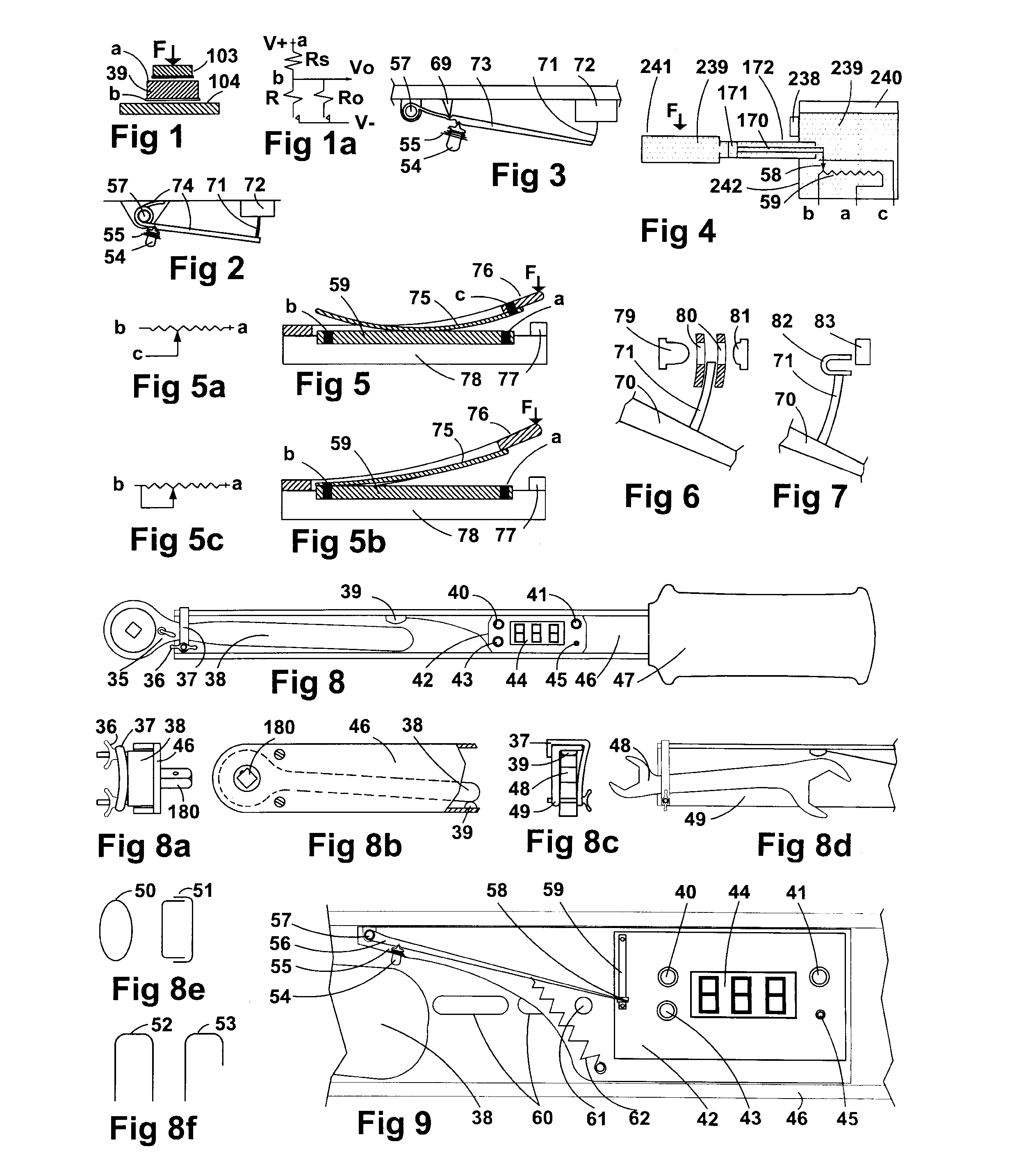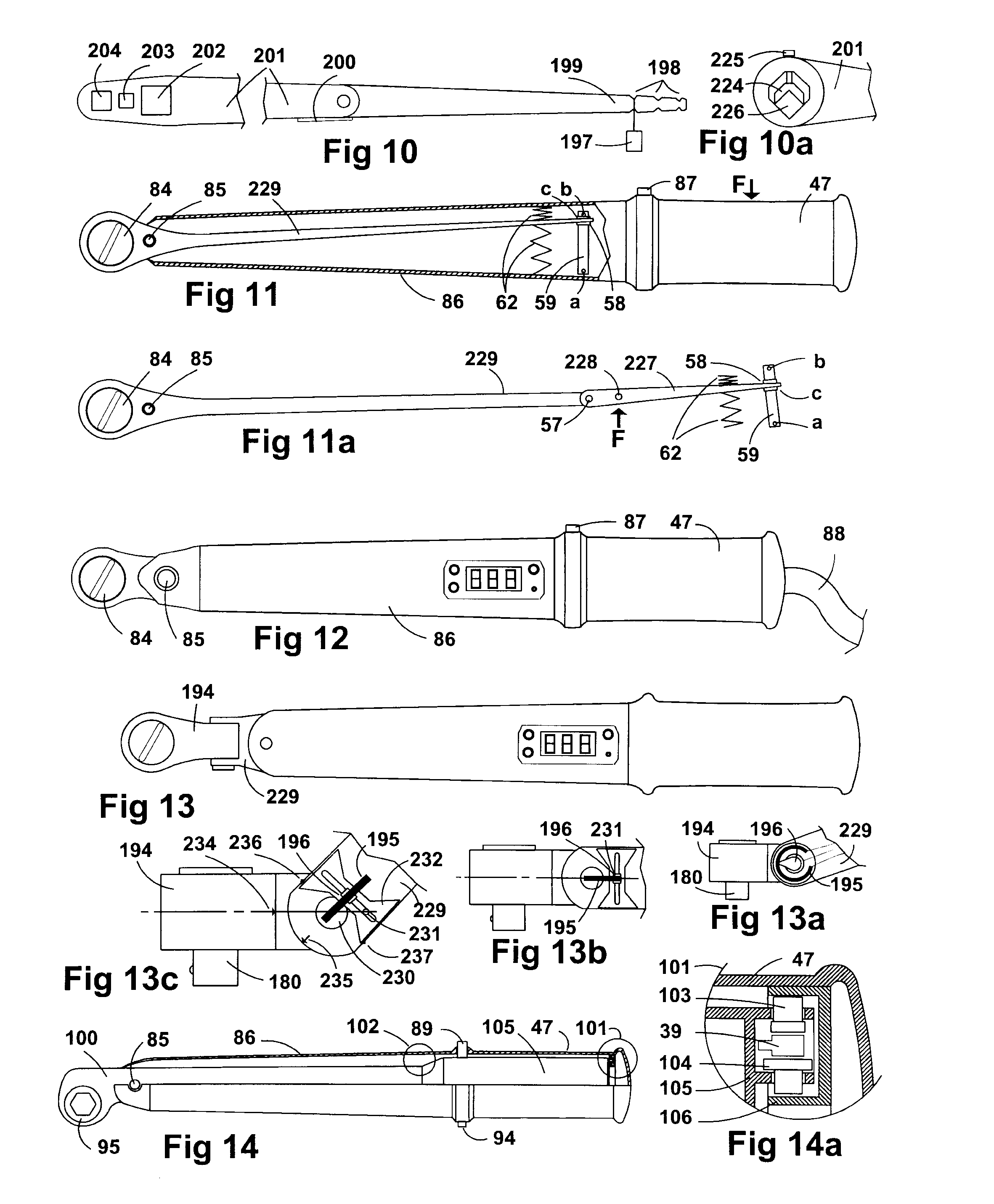Force and Torque Measurements with Calibration and Auto Scale
a technology of force and torque and auto scale, which is applied in the field of electromechanical measurements of force and torque, can solve the problems of high error rate, difficult calibration of both in the field or the factory, and prior art methods of accuracy and measurement methods, so as to save time and effort, improve accuracy, and do the work safely and accurately
- Summary
- Abstract
- Description
- Claims
- Application Information
AI Technical Summary
Benefits of technology
Problems solved by technology
Method used
Image
Examples
Embodiment Construction
[0074]The two measurements of force and torque could be exchanged, with the understanding that the torque is the amount generated when multiplying; the force component perpendicular to the line from the point it acts on to the point where the torque measurement is made, by the distance between these two points. In the following description of embodiments and figures of this invention, measuring the force at a specific distance could be used to express the torque.
[0075]FIG. 1 shows a force sensor (39) with the force (F) applied on it. This sensor (39) is usually made from a polymer or elastomeric material, which has a resistance that changes proportional to the force applied on it. The resistance is measured between the first electrode (a) and the second electrode (b). This kind of sensor is best suited for this application because it has small dimensions (could be of a thickness less than 0.5 mm and a diameter less than 15.0 mm), easy to use, and is simple to condition electronicall...
PUM
| Property | Measurement | Unit |
|---|---|---|
| diameter | aaaaa | aaaaa |
| diameter | aaaaa | aaaaa |
| force | aaaaa | aaaaa |
Abstract
Description
Claims
Application Information
 Login to View More
Login to View More - R&D
- Intellectual Property
- Life Sciences
- Materials
- Tech Scout
- Unparalleled Data Quality
- Higher Quality Content
- 60% Fewer Hallucinations
Browse by: Latest US Patents, China's latest patents, Technical Efficacy Thesaurus, Application Domain, Technology Topic, Popular Technical Reports.
© 2025 PatSnap. All rights reserved.Legal|Privacy policy|Modern Slavery Act Transparency Statement|Sitemap|About US| Contact US: help@patsnap.com



